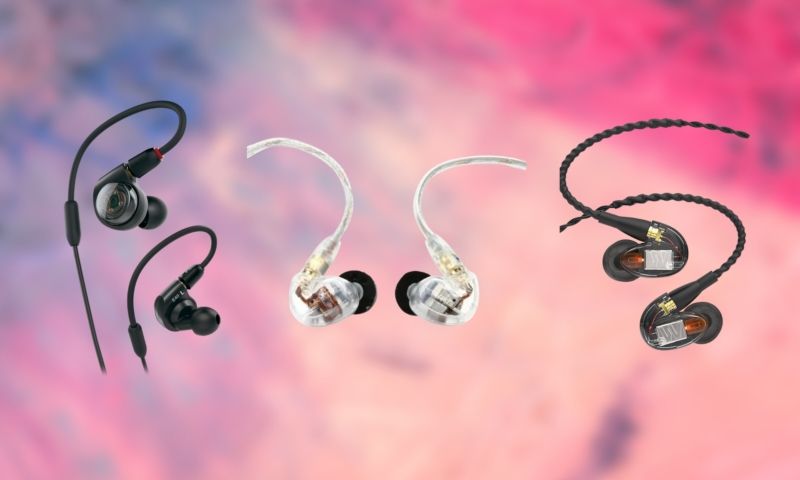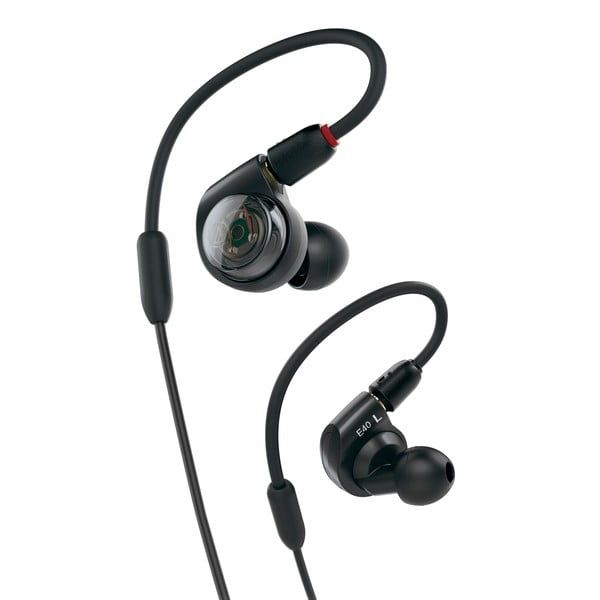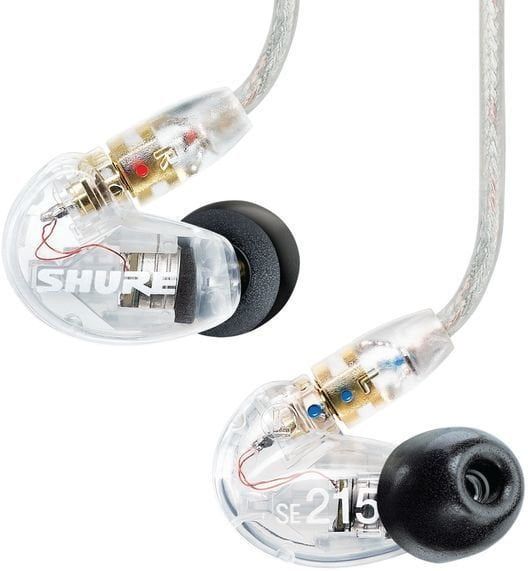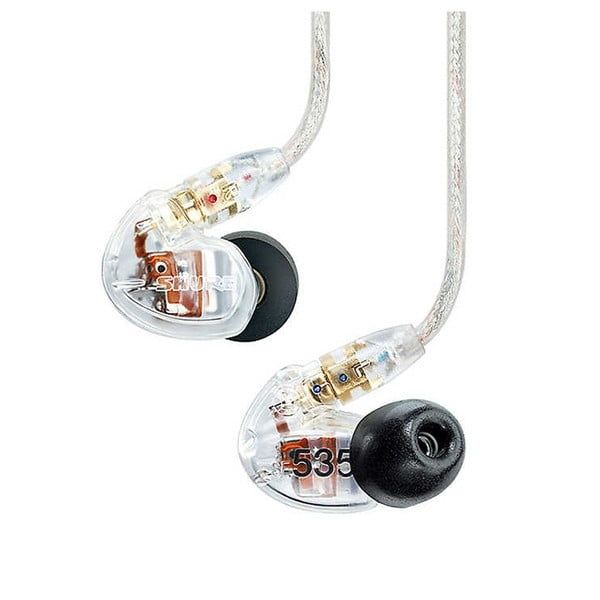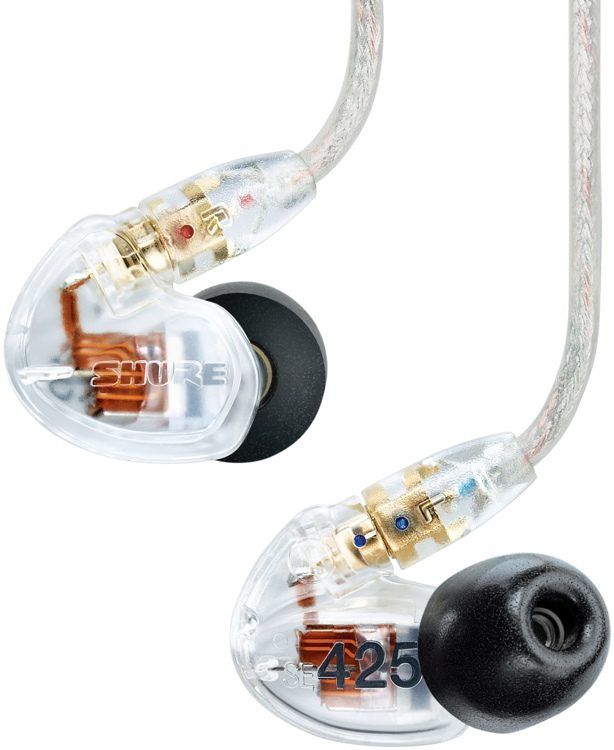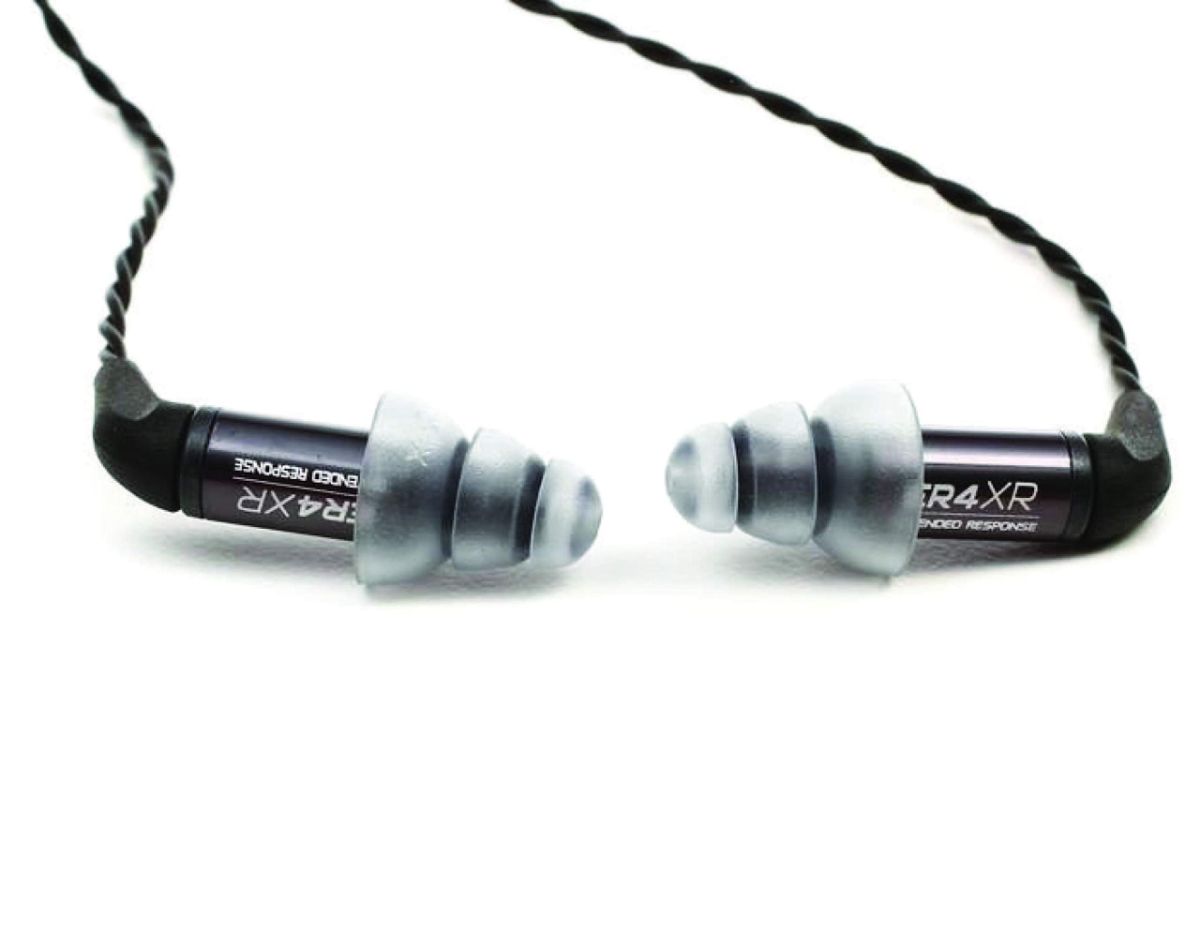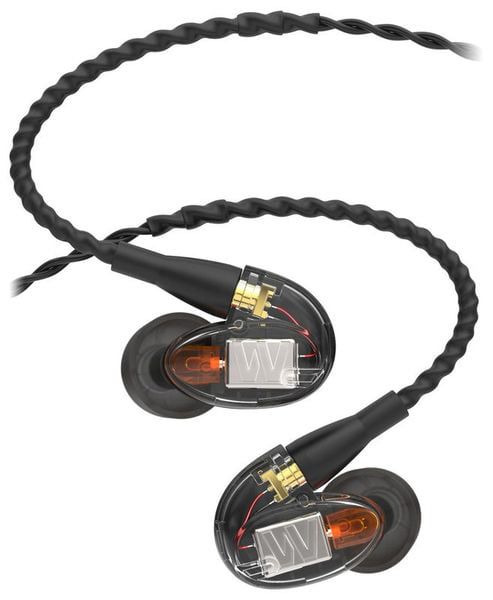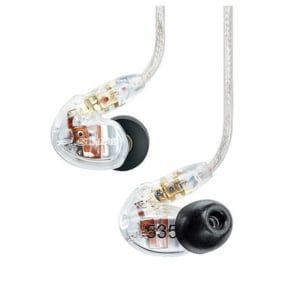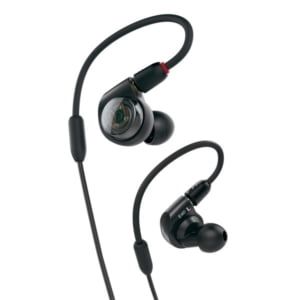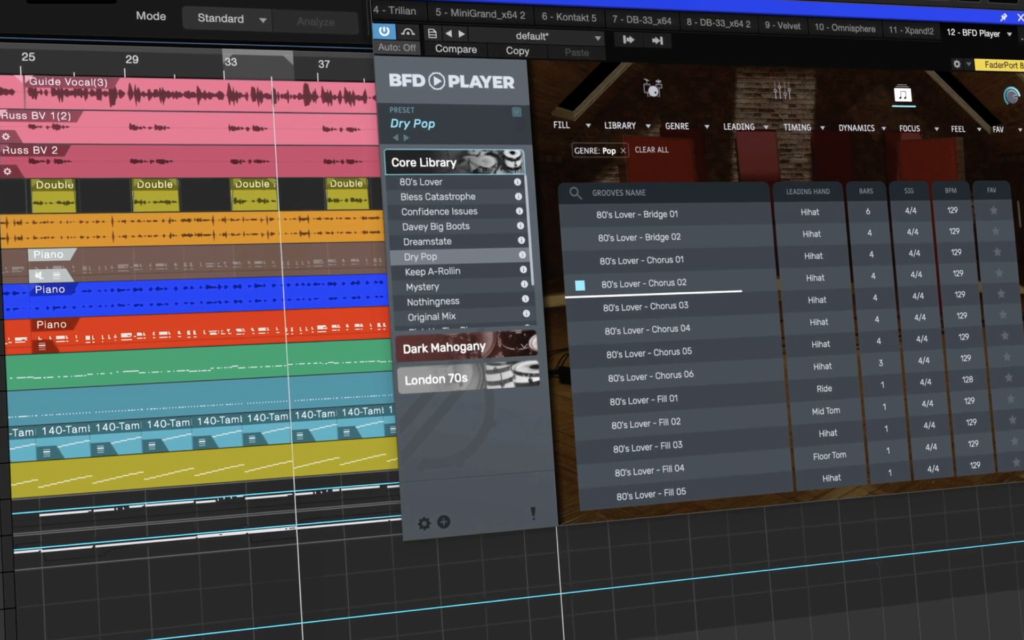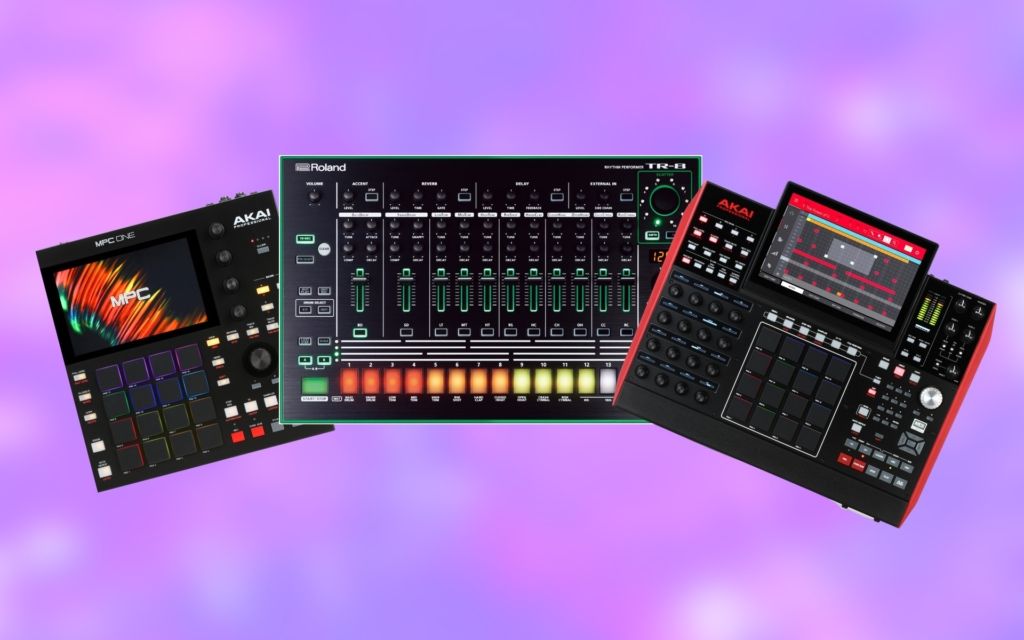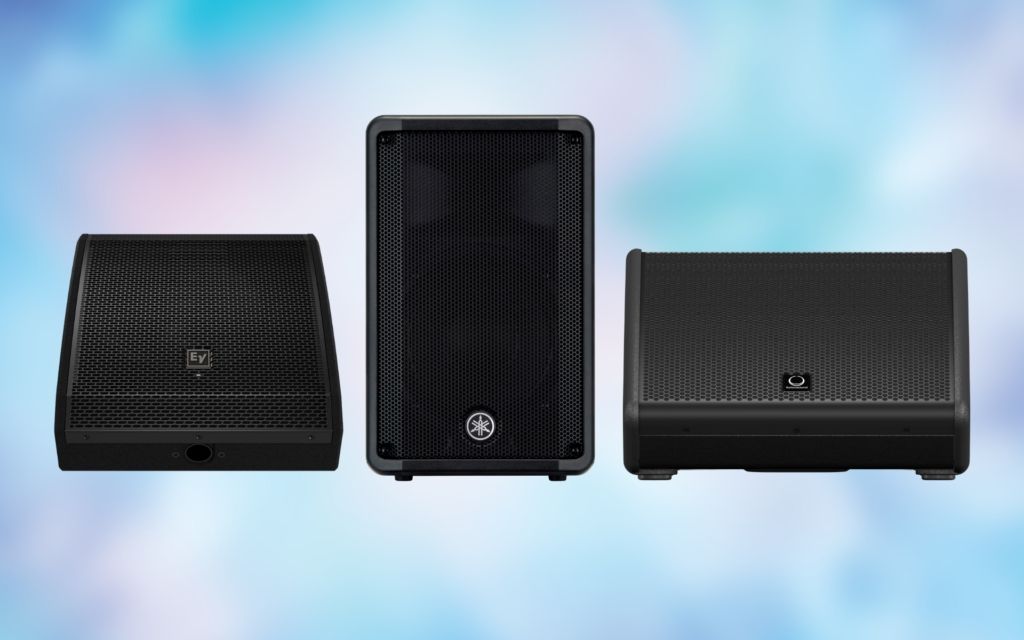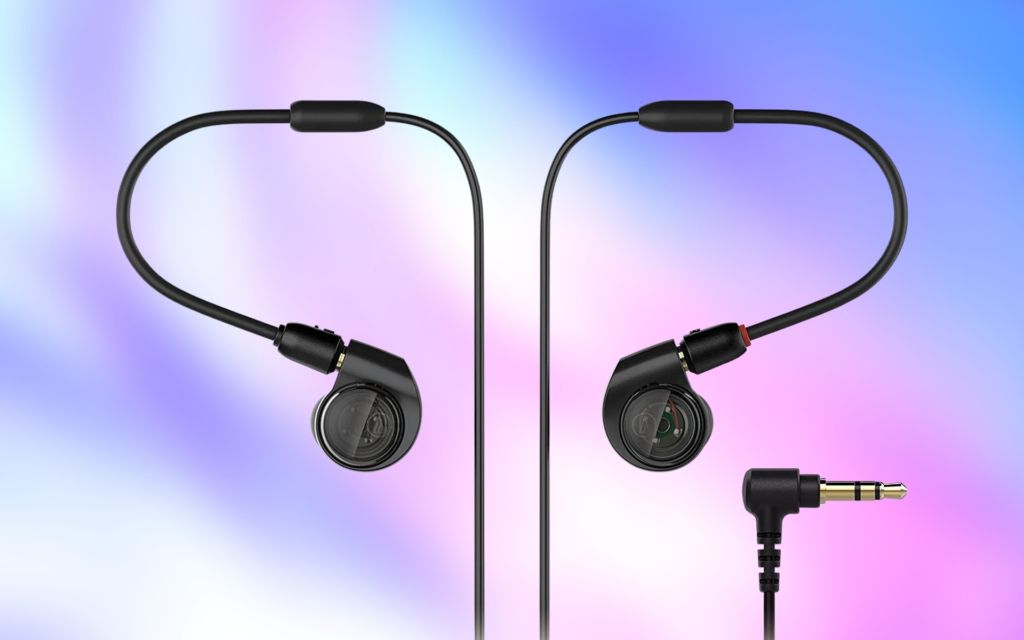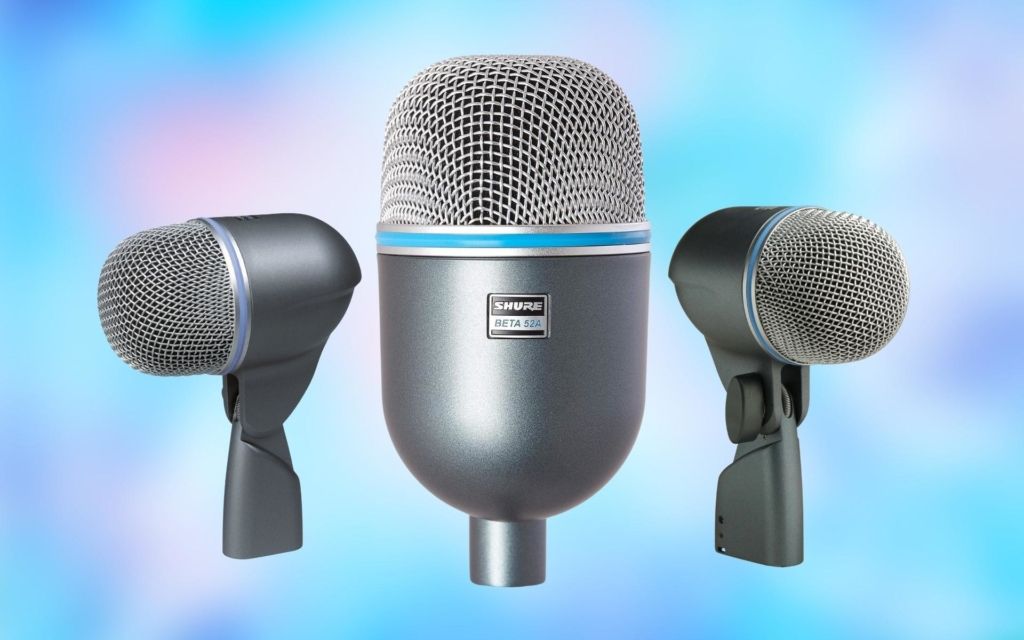I review products independently and only recommend products I would use myself. If you purchase through a link, I may earn an affiliate commission. Learn more.
In-ear monitors have become increasingly popular with modern drummers, and are nowadays a staple tool for live drumming performances as well as studio sessions.
They are particularly useful for many reasons. Drummer IEMs are ideal for running backing tracks, especially in live performance situations, where a drummer needs to hear a click track, as well as the drums and any other instrumentation live on stage.
In-ear monitors also provide superior noise isolation from outside noise and feedback, and can help to protect your hearing over the long term.
In this guide, we’ll take a look at the best in-ear monitors for drummers on the market. I’ve compared noise isolation, build quality, performance, and cost to give you my top recommendations.
Contents
- What are the Best Drummer's In Ear Monitors?
- How I Tested and Selected the Best In Ear Monitors
- In-Depth Drummer's In Ear Monitor Reviews
- In-Ear Monitors For Drummers Buyer’s Guide
- Why are In-Ear Monitors Important for Drummers?
- Benefits of Using In-Ear Monitors Over Stage Wedges Live
- Features to Look For in In-Ear Monitors
- The Number of Drivers In Your IEMs
- Custom Molded vs Universal Fit IEMs
- How Do I Run Wireless In-Ears Live?
- Final Thoughts
What are the Best Drummer's In Ear Monitors?
How I Tested and Selected the Best In Ear Monitors
With so many good in-ear options available, I tested quite a few to narrow down all the best options for drummers.
The first thing I did with each pair was look at sound isolation. I played drums while wearing them to see how much sound was blocked out, giving me a good idea of how useful the monitors would be. I also played along to music to get a further feel for how they isolated sound.
I then assessed the sound quality. I found out about the drivers and listened to a range of different songs to hear how clear and accurate they sounded. I also played drums through a mix to test the sound quality in a practical situation.
Finally, I checked how comfortable each pair of in-ears was, as that’s a huge deciding factor when considering a pair.
In-Depth Drummer's In Ear Monitor Reviews
Mackie MP-320 In-Ear Monitors
Mackie MP-320 In-Ear Monitors Review
The MP-320s are a set of really high-quality earphones from Mackie. While these are a bit pricier than many popular options, they thrive in a few areas where those in-ears don’t.
The main feature of these monitors is that they block a huge amount of sound out, giving you crystal-clear audio quality when you’re playing drums.
They have a passive noise isolation level of 40dB, and I found that it gives you quite a bit more noise isolation than most other pairs.
This is due to the large earpiece design that also has an ergonomic touch. The brand has created them to feel as comfortable as possible while also keeping your ears as safe as possible, and I enjoyed wearing these earphones because of this.
They also have a triple-drive design, ensuring that you get pristine response in the highs, lows, and mids.
I’ve found that most in-ears that are more affordable tend to favor highs and mids, so it’s great that these give you a more balanced mix when running music or monitor mixes through them.
I know some drummers aren’t big fans of the bulky earpieces, but you’ll get used to them after a while of playing with them. The larger earpieces lead to more sound isolation, which is a perfect feature for drummers wanting to protect their ears.
The last thing to mention about these is that they come with an impressive number of tip options. You get four main designs with small, medium, and large versions of each.
Pros
- Incredible sound quality and depth thanks to the triple-driver design
- 40dB of noise isolation to protect your ears from getting damaged when playing drums
- Wide range of earpiece options to fit all ear types
- Detachable cable allows you to just use the earphones as ear protectors when needed
Cons
- These may feel a bit bulky for drummers that are used to smaller earpieces from brands like Shure
Shure SE215 In-Ear Monitors
Shure SE215 In-Ear Monitors Review
The Shure SE215 In-Ear Monitors are a road-worthy set of in-ear monitors for the demanding, modern drummer. They deliver an excellent sound performance, and the comfortable sound-isolating sleeves block up to 37dB of external noise.
In all my years of gigging, I’ve found these to be the most popular option ever. They offer such good quality at an affordable cost, making them quite reliable.
These in-ear monitors are well constructed and the sound is good for its price range. I use this exact pair of Shure SE215 headphones for every show and I cannot fault their reliability and ability to deliver accurate, consistent performance night after night.
They offer a good range of sonics and the bass on the heavy side, but I like a slightly deeper bass personally.
Taking into consideration the price, sound, and comfort of these in-ear monitors for drummers, they reflect excellent value for money.
These are a great choice of in-ear monitors for drummers on the market right now, and they deliver a professional-level performance at a fraction of the price of some other in-ear monitors on the market.
Pros
- Excellent value in-ear monitors
- Excellent levels of noise reduction
- Reliable, consistent performance
Cons
- Bass is on the heavy side
- Sound is not as clear as premium offerings
Shure SE535 In-Ear Monitors
Shure SE535 In-Ear Monitors Review
The Shure SE535 in-ear monitors are some of the best for drummers on the market.
These in-ear monitors boast an incredible sound and build quality, and they are definitely one of the best pairs of earphones that I’ve tried out.
These earphones for drummers are incredibly clear across the frequency spectrum, you’ll be amazed. The triple high-definition MicroDrivers offer a sublime response with fantastic detail and clarity.
The highs, mids, and lows sound exceptionally detailed. They also offer a fantastic balance that makes for an ideal sweet spot when monitoring.
The SE535 in-ears are pricey, but they have a sublime sound and you can really hear the difference.
These are well worth the investment if you are looking for ultra-premium sound quality, reliability, and comfort for in-ear monitoring.
Pros
- Incredible listening experience thanks to the three separate high-definition MicroDrivers
- Comfortable fit for all musical applications
- Very good noise isolation compared to most headphones for drummers
Cons
- Premium price tag
Shure SE425 In-Ear Monitors
Shure SE425 In-Ear Monitors Review
The premium quality Shure SE425 In-Ear Monitors deliver superb clarity as well as strong and punchy bass. These in-ear monitors for drummers are professional-grade and offer sublime sound reproduction.
The Shure in-ear monitors for drummers are excellent for use in both the studio as well as live on stage.
When I used them, they boasted incredible clarity and great sound isolation with a snug fit. They really felt like a solid pair that would last years of frequent use.
Listening to the SE425s, the sound quality of these drummer in-ear monitors is amazing. The dual high-definition MicroDrivers deliver an incredibly accurate and balanced listening experience.
These in-ear monitors for drummers are of exceptional quality and they are designed to give you the performance and comfort you need for studio performances and live on stage.
Pros
- Perfect on stage and in studio
- High-definition MicroDrivers
- 37dB noise reduction
- Exceptional sonic reproduction
Cons
- Premium price tag
Audio-Technica ATH-E40 In-Ear Monitors
Audio-Technica ATH-E40 In-Ear Monitors Review
The ATH-E40 in-ear monitors offer fantastic sonic performance and have all the qualities required for live drumming and playing along to backing tracks.
With their comprehensive frequency response and innovative ADDC connector, these monitoring headphones deliver excellent comfort, stability, and sound quality.
What I find particularly impressive about these in-ear monitors is their well-rounded and balanced sound.
The midrange frequencies are these in-ear monitor’s biggest strength, but the low-end sounds tight and accurate.
In terms of sound isolation, they don’t perform quite as well as some other IEM options, but providing these in-ear monitors fit properly, they provide a minimum of -15dB external noise reduction.
They are comfortable to wear considering they are a more basic entry-level model of IEMs, and they are reliable for gigging with a live band.
Lastly, they also come complete with all of the attachments, cables, and additional silicone tips you need to ensure they fit properly and deliver solid performance.
Pros
- Solid all-rounders that deliver a balanced frequency output, with a pronounced midrange
- Innovative A2DC connector is more reliable than typical varieties
- Affordable price tag makes them one of the best entry-level options
Cons
- They don't offer the best noise isolation compared to other ear monitor headphones
- You might notice some harshness in the higher frequencies if the in-ear monitors are cranked up too high.
Etymotic Research ER4XR In-Ear Monitors
Etymotic Research ER4XR In-Ear Monitors Review
Etymotic has designed its products to improve and protect the hearing of music lovers everywhere and holds over 100 patents for its own products, which is a real testament to its passion and design.
These Etymotic ER4XR in-ear monitors are an incredible set of in-ear monitors for drummers. They offer a very high level of performance, with powerful armature drivers that are precision matched to within 1dB, and offer an amazing noise reduction of up to 42dB.
They are assembled and precision matched in the USA. Inside the kit is an assortment of various ear tips and a protective carrying case as well as a certificate of production and testing. There is also a 2-year guarantee carried with these monitors.
The unique earpieces are very comfortable and they fit smoothly inside the ear canal.
They block out an incredible 42dB of external noise, which is the best hearing protection I have experienced from any set of in-ear monitors.
Etymotic has really delivered here with a superb product, and are some of the best in-ear monitors for drummers on a premium budget.
Pros
- Exceptional high fidelity audio
- Up to 42dB noise reduction
- Uncompromising accuracy
Cons
- Doesn't loop around the ears
Westone UM10 In-Ear Monitors
Westone UM10 In-Ear Monitors Review
Lastly up for review, we have a set of in-ear monitors made by Westone Audio. These Westone Audio UM10 Monitors utilize proprietary single balanced-armature drivers that deliver dynamic and articulate sound.
These in-ear monitors for drummers are designed well and have some high-quality features and the price point is very attractive.
I love the level of performance they offer, and they deliver a well-balanced frequency range, leading them to be a solid overall option.
The Westone UM Pro 10 in-ear monitors provide amazing detail and clarity. The economical UM Pro 10 sports a single balanced-armature driver that is smaller and more efficient than traditional dynamic drivers.
For superior performance in a compact, lightweight package, check out the Westone UM Pro 10 in-ear monitors for drummers!
Pros
- Comfortable and durable
- Great sound for price range, with balanced frequencies
- Durable and flexible cable
Cons
- Bass lacks richness and depth
In-Ear Monitors For Drummers Buyer’s Guide
In-ear monitors are a fantastic tool for drummers when it comes to live performances and studio recording sessions.
A drummer’s main responsibility is to lay down the foundation of the music for all of the other members and to keep the music glued together in time.
In-ear monitors are an excellent solution for any drummer who wants to get the most out of their performance. They provide excellent sound quality, comfort, and increased protection for your hearing.
Why are In-Ear Monitors Important for Drummers?
Professional modern live performances demand a drummer to be synchronized with a click track and with a backing track to be run live through the PA to accompany a group or musical artist.
It is expected for the modern drummer to be equipped with a set of in-ear monitors to utilize backing tracks as well as hear the live instruments, including drums.
Most modern festival performances and arena shows are run like clockwork, with all the members in a band actively being able to hear each other accurately through wireless receivers and in-ear monitoring systems.
The modern music industry demands experienced drummers to be able to play along to a click track live on stage and also in the studio. There are a variety of in-ear monitors available on the market, and there are good options for all budgets.
Benefits of Using In-Ear Monitors Over Stage Wedges Live
In addition to bringing clarity and accuracy to your sound, in-ear monitors come with a lot of advantages over traditional monitor wedges for live performances.
Better Sound Quality
Although stage monitors are designed to be heard by the performers on the stage, they can still interfere with the other speakers and muddy up the sound, or introduce feedback or phasing issues. With in-ear monitors, you don’t have to worry about any of these problems and will get an incredibly clear sound directly into your ears.
Noise Isolation
IEMs offer isolation from external noise, meaning that you will be able to hear your backing tracks, click track, and other instruments more clearly and you’ll be protecting your ears in the process. Wedges are often pushed to high volumes on stages to compensate for loud crowds and other instruments, but with IEMs you can keep your levels at a comfortable level and still get a great mix.
Compact and Portable
Secondly, in-ear monitors are more travel friendly. They are small, portable, and much less cumbersome to transport than speaker wedges. Wedges also take up a lot of space on stage, and they can be a real hindrance especially if you are setting drums up on a small stage. Drummers don’t move about too much on stage, but IEMs offer much greater mobility.
Features to Look For in In-Ear Monitors
Sound Quality
Quality in-ear monitors deliver superb clarity and crisp detailing of all frequencies so that you will be able to accurately hear all the music being sent into your ears. The IEMs should offer a balanced sound reproduction, as well as provide clear, distortion-free sound at all volumes.
Durability and Comfort
In-ear monitors are expected to be very durable and resistant to sweat to ensure a secure and comfortable fit night after night whilst playing shows. They should fit snugly in your ears and not cause any pain or discomfort after extended wear.
Noise Isolation
The noise isolation offered by in-ear monitors is crucial because hearing damage that may be caused by consistent exposure to loud noise is irreparable. In-Ear Monitors are proven to block external noise by up to 30-42db. They should block out as much external noise as possible, so you can focus on your performance.
Price
In-ear monitors can range from very affordable to very expensive, so find something that fits your budget. All of the in-ear monitors featured in this guide have a universal fit, and they include various silicone or foam tips designed to fit any ear canal. The most expensive type of IEM is custom molded, and I’ll explain more about this below.
The Number of Drivers In Your IEMs
The drivers in an in-ear monitor are the responsible components for producing sound. The more drivers, the higher quality of sound and range of frequency you can hear.
Most universal fit IEMs have either one, two, or three-driver configurations. Professional custom-molded IEMs can even have up to eight drivers or more.
A single dynamic driver is usually enough for a person to be able to hear their drums and a click track properly in the mix, while multiple drivers offer extra clarity and detail.
Three drivers are ideal for universal fit in-ear monitors, as these provide separated lows, mids, and highs in the frequency spectrum. This gives a more detailed and accurate representation of the music.
Custom Molded vs Universal Fit IEMs
There are a number of different models of in-ear monitors that are specifically designed for drummers. Some are custom ear molds, which are molded to your ears. They provide the best fit and typically superior sound quality, but they are far more expensive than other types of IEMs.
The most popular option is universal fit IEMs that come with multiple interchangeable cushions and tips to fit a variety of ear sizes. These are generally cheaper than custom molds, but they may not provide the same sound quality or noise isolation as well-fitted IEMs.
Ultimately, the choice of in-ear monitors for drummers is up to you, depending on your budget and your specific needs.
Unless you are regularly touring or a professional-level drummer, you probably don’t need custom-molded in-ear monitors. Universal fit IEMs such as the options included in this guide are more than sufficient for most drummers.
And with so many options available today, there’s sure to be a set of in-ears that’s perfect for you.
How Do I Run Wireless In-Ears Live?
For studio use, a drummer will be sent a signal from the control room to his in-ear monitors, meaning he does not require a wireless pack.
For lots of live applications, a drummer may not necessarily be required to own a wireless in-ear monitoring system. I personally run out of a headphone amp that is hooked up to a laptop for our live performances.
Top-level professional musicians use fully equipped wireless in-ear monitoring systems in order to hear a balanced mix from all the members of the band and these also allow for full freedom of movement.
A wireless in-ear monitor pack is comprised of a transmitter and a wireless receiver, to which the in-ear monitors are connected.
• In-Ear Monitors: The earphones that are worn to allow the user to hear the sound.
• Wireless Transmitters: A device that is used to send the audio of the performance to the receiver.
• Receivers: The device that connects to the earphones and is typically worn as a belt pack.
Wireless in-ear monitoring essentially replaces stage monitoring at venues. The transmitter is a large device that sends a strong signal to the receiver and lives off-stage.
Professional wireless in-ear monitoring systems ensure that a drummer will be provided with an accurate mix of all the desired instruments straight into his ears, whilst having the freedom to move about as much as desired.
Wireless in-ear monitoring systems remove external audible factors such as crowd noise and they deliver the same performance regardless of the stage size and whether the concert is indoors or outdoors.
A good quality wireless set including a transmitter and receiver is an expensive investment and is not a typical purchase for a gigging band at regular-sized clubs and concerts.
A set is easily upwards of $1000 and will really only be required by bands that are playing stages much too large to be using regular foldback stage monitors.
Final Thoughts
Although a set of wireless in-ear monitors may not be in your sights just yet, a top-quality set of in-ear monitors will provide functional, versatile, and essential use for all your drumming performances.
Whether you are practicing at home, rehearsing with a band, or performing a live show, a top-quality set of in-ear monitors provides you with high-fidelity audio as well as vital hearing protection that will reduce the risk of developing hearing loss.
All musicians can share times of experiencing tinnitus (the loud ringing in your ears after being exposed to loud noise), and it’s a very early sign of noise-induced hearing loss. In-ear monitors block out external noise and will permit you to hear what’s being sent into your ears at a lower volume and to save your hearing.
Whatever your budget might be, I am happy to be able to offer the best in-ear monitors for drummers within this guide, all of which offer great sound and well-balanced frequencies that I’m sure you’ll love.
All of these in-ear monitors for drummers have been well-designed to withstand frequent and regular use, so you can be confident with their reliability and retain your focus on the music!

